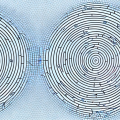Understanding the difference between the associative and commutative properties is one of the most important concepts for a student of math to learn. These two properties, although similar in form, have different implications for computations, and need to be understood in depth. Therefore, it is essential for anyone wanting to pursue mathematics to have an adequate knowledge of the associative and commutative properties, including their definitions, differences between the properties, examples, and applications.
What is the Associative Property?
The Associative Property states that the grouping within an equation can be changed without changing the outcome of the equation. In other words, it doesn’t matter how you define the groups when multiplying or adding, the result stays the same. For example, in the expression (3*5)*2, you could rewrite it as 3*(5*2), and the outcome would be exactly the same – 30. This also applies to addition, such as (6+3)+5 being equal to 6+(3+5).
The Associative Property is one of the basic properties of mathematics, and is used in many different equations. It is important to understand this property in order to solve more complex equations, as it can help to simplify the equation and make it easier to solve. Additionally, understanding the Associative Property can help to identify errors in equations, as it can be used to check that the equation is written correctly.
What is the Commutative Property?
The Commutative Property differs from the Associative Property in that it is concerned with the order of numbers when adding or multiplying. The Commutative Property states that the order of numbers doesn’t affect the result of an equation. For example, 3+5 is equal to 5+3, and 2*4 is also equal to 4*2. While it is still important to group together related numbers – as in 3*(2+4), the order of numbers does not matter.
Examples of the Associative Property
Here are a few examples of the Associative Property that are easy to understand:
- (3+7)+2 = 3 + (7+2), so you can add 3 and 7 separately first, or add 7 and 2 separately first.
- (5×4)x3 = 5x(4×3), so you can multiply 5 and 4 separately first, or multiply 4 and 3 separately first.
- (3×7)+(4×5) = (3+4)x(7+5), so you can either do each operation separately or mix them together in any order with the same result.
Examples of the Commutative Property
Here are some examples of how the Commutative Property works:
- 8 + 3 = 3 + 8
- 9 x 5 = 5 x 9
- (1 + 6) x 4 = 4 x (1 + 6)
Understanding How the Properties Differ
It is important to understand how these two properties are different. The Associative Property deals with the grouping of terms. It states that you can group or rearrange terms to get the same result, no matter what order they are written in. The Commutative Property deals with the order of terms. It states that you can switch the order of terms and still get the same result.
Benefits of Understanding the Difference Between Associative and Commutative Properties
The ability to distinguish between the Associative and Commutative Properties will help math students become more precise when solving equations and simplify work by rearranging terms. Additionally, recognizing how these properties function can help students identify and verify patterns in equations. This knowledge can also assist students with correctly using order of operations.
Common Misconceptions About the Properties
One common misconception is that these two properties are interchangeable, when they are actually quite different. It is easy to confuse the two because they both involve rearranging terms and expressions, but they each have distinct functions. Additionally, some students may think that only addition or only multiplication have these properties; however, both addition and multiplication have both associative and commutative properties.
How to Use the Properties in Math
Using these properties requires understanding order of operations and utilizing both Associative and Commutative Properties correctly. To start, identify whether an expression requires addition or multiplication. Then, if addition, start by looking at all the expressions which contain a plus sign. If multiplication, start by looking at all expressions which contain a multiplicative sign. From here, determine the proper operation groupings first, based on associativity and then begin rearranging terms based on commutativity. After doing so, proceed with solving.
The Role of Associative and Commutative Properties in Other Disciplines
The Associative and Commutative Properties are not limited to algebraic equations; they are also found in many other fields including geometry, probability, discrete math and computer science. Understanding these properties can give a student insight into how problems can be solved more efficiently in these areas. In computer science, for example, understanding how these properties work can help create optimized algorithms.
By knowing how to properly apply and differentiate between the associative and commutative properties, students can make math simpler and more manageable. Whether you’re a student hoping to do well on a math test or someone looking for career success in a field like computer science or digital media, understanding these properties will put you ahead of the competition.





